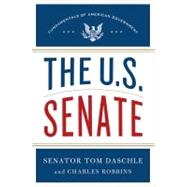
What is included with this book?
TOM DASCHLE is a former U.S. Senator and Senate Majority Leader from South Dakota. He is currently a Senior Policy Advisor to the law firm of DLA Piper and a member of the Health Policy and Management Executive Council at the Harvard School of Public Health.
A former daily newspaper reporter and editor, CHARLES ROBBINS ran press shops for two Congressmen, a Senator, a gubernatorial campaign and a presidential campaign. Robbins has co-written three nonfiction books with U.S. Senators.
The New copy of this book will include any supplemental materials advertised. Please check the title of the book to determine if it should include any access cards, study guides, lab manuals, CDs, etc.
The Used, Rental and eBook copies of this book are not guaranteed to include any supplemental materials. Typically, only the book itself is included. This is true even if the title states it includes any access cards, study guides, lab manuals, CDs, etc.